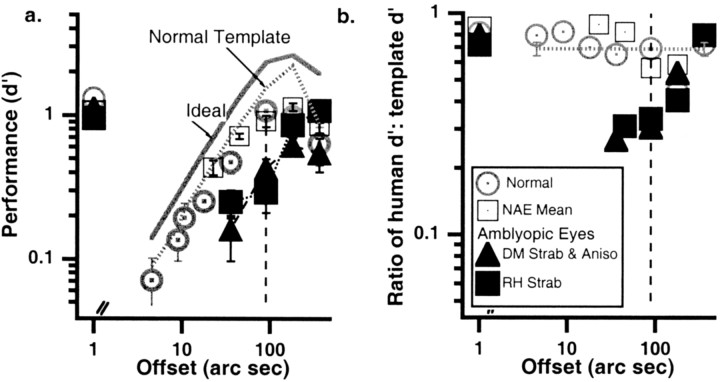Fig. 3.
a, Performance (d′) for position as a function of offset size. Open circlesare the means of three normal control observers; open squares are the means of the nonamblyopic eyes of the amblyopes. Solid symbols are the amblyopic eyes of RH and DM. The solid gray line shows the ideal observer's performance (calculated based on the same contrast used to test the normal observers). For the amblyopic eyes, which were tested at a higher physical contrast (but at the same multiple of the detection threshold), the ideal observer would be simply shifted upward. Thedotted gray line shows the template, derived directly from the classification coefficients, for the normal observers. Thevertical dashed line at 90 arc sec marks the offset used for Figure 2b. The leftmost points (at an abscissa value of 1) show the detection performance (d′). b, Ratio of human/template performance (d′) as a function of offset size. Theleftmost points (at an abscissa value of 1) show the ratio of human/template performance for detection. Details are as ina. NAE, Nonamblyopic eyes; RH, strabismic amblyope; DM, strabismic and anisometropic amblyope.

